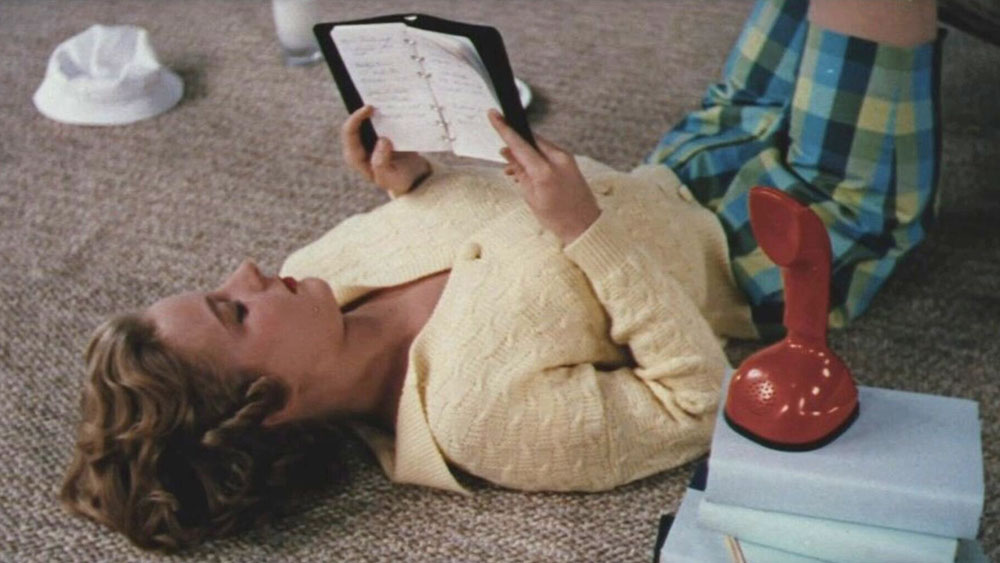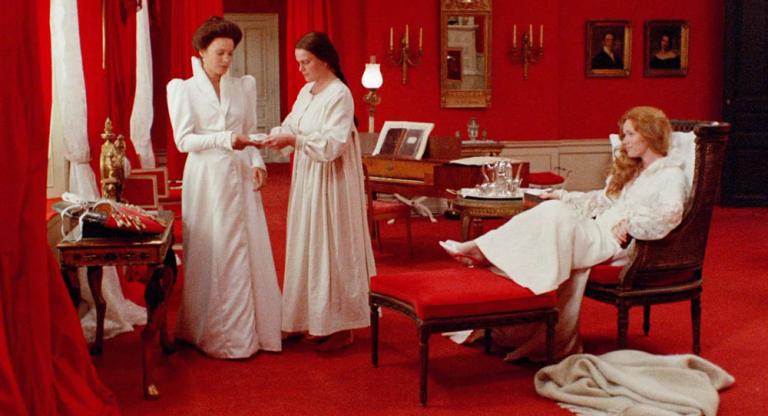Over the course of forty years, Megan and Rick Prelinger have rescued, collected, preserved, digitized, and donated many tens of thousands of films that likely would have otherwise been lost. Sixty thousand of these films are in the Library of Congress, another 10,000 are available free of charge on the Internet Archive, and the duo are currently in the middle of yet another massive, multi-year digitization project.
In 2004 they opened the Prelinger Library in San Francisco, which houses a wide-ranging collection of American ephemera and is open to the public for research and reuse. In Rick’s online manifesto, in a section headed “The Dregs are the Sweetest Drink,” he describes the Library’s holdings:
It’s full of outdated information, extinct procedures, self-serving explanations, ideas that never passed the smell test, and lies. And yet that’s where you find the truth. You can’t judge the past at its best, you need to confront its imperfections. And of course that’s true for the present as well.
The Prelingers are working archivists with an abiding, activist commitment to the public’s right to access—and even more crucially, to reuse—archival material. Rick has long been a collector of sponsored films, films that are also referred to as “useful films,” and it's this insistence on usefulness that seems to drive so much of his work.
I spoke with Rick about two programs of films drawn from his own collection he is presenting at the Museum of Modern Art as part of “To Save and Project.”
Sierra Pettengill: These sponsored films have formed such a big part of your collecting and preservation. What are the various forms of appeal of these kinds of films? What is it you're looking for in them?
Rick Prelinger: What I'm hoping with these two programs at MoMA is to demonstrate that while these films are weapons, and they're also hokey, and they're also quaint; at the same time, many of them also constitute works of art.
There was this unit of filmmakers at University of Oklahoma who made this sort of Midwestern noir. The films are a little bit overdramatic, but they're filled with sort of Sam Fuller–type close-ups. They're trying to bring psychological concepts to mass audiences, and so the psychology is infused with drama, but it's very much a genre drama. And I think it's a wonderful example of just how much incredible diversity there was in the filmmaking world in those years where like 10,000 sponsored films were being made.
Long Distance [1946] is a film about telephones and the women that enable the process of long-distance telephone calling. It's a very beautiful film in terms of its coordination of sound and image and music, made by a company that cranked out hundreds of similar films for AT&T. But it's also an amazing film about settler colonialism: how settler colonialism requires communication, and communication enables settlement and colonization. The film makes that very, very clear.
And In the Suburbs [1957] is neither fish nor fowl—it's a film made by Redbook magazine that their ad salespeople would take around to show potential advertisers. It’s made by a very interesting company in Princeton where all sorts of experimental makers worked. Stan Brakhage worked there for a while. Its founders were Robert and Virginia Bell, and Virginia worked under a gender-neutral pseudonym, Tracy Ward, because commercial sponsors didn't trust women to write their scripts or direct their films. And it's largely her film, together with the cinematographer. It’s a film that owes so much to the avant-garde; it experiments with the interaction of black-and-white and color, sound and silence, still and motion. It’s a collage film that's made to sell, but it's so much more than that. It's an incredible self-portrait of a group of people who we would now describe as hyper-consuming yuppies.
And finally, The Your Name Here Story [1954]. This comes from this fabulous company, Calvin, in Kansas City. Most people know it as the company where Robert Altman got his start, and a bunch of other people making industrial and sponsored films. But they were this incredibly innovative company vertically-integrated in like a seven- or eight-story building: the lab and several soundstages and cycloramas and sound department, animation, et cetera, you name it. And every year they would invite people to come to this free workshop. These were people who were A/V executives from companies that made films, and they would come and they would learn about what makes a good film, and they would make a film. And these are usually self-referential films that sort of spoof filmmaking. And this is the generic film about your company called The Your Name Here Story, with these cliches that can apply to absolutely anything, and in some ways that tells you more about the sponsored-film business than anything else.
Useful cinema (which is a term I borrow from Charles Acland and Haidee Wasson), or cinema with a job to do—it's the dominant form of media. Dramatic material and television take second or third place next to all these films about training and behavior.
SP: My boyfriend is really insistent that when we watch, like, Columbo on Tubi, that we don't mute the commercials—that we have to watch them because they are a crucial portrait of the world we live in. I love this in concept (and despise it in practice), but I do feel like often the uglier but much more pervasive ways of understanding a time and a place don’t always rise to the top of our cultural understanding of history. I really feel that particular value in sitting with these sponsored films as well.
RP: But why did everybody watch all of Columbo, especially during the pandemic? We did. It really deteriorates after year six or seven. I think I'm related to Peter Falk. But this isn't substantiated.
So at the beginning, when I began to look at educational and industrial and advertising films that were made to do jobs, I was amazed how deep and systemic the effort was to change minds and change behavior through film. In recent years, I've begun to understand that these films are not just documents of that process, but they really are the weapons themselves. These films were media weapons, weaponized media. They also defamiliarize today's world. I'm a big believer in sort of artistic defamiliarization. And these films really do that.
With Master Hands [1936], it brings you into an extinct industrial process in a deeply eloquent and immersive way. But also, when we look at it from the point of view of almost 90 years later, we see how dangerous these jobs are, and we see the marginalization of humans next to these gigantic machines. We think of a world organized around production in a way that we generally don't think much anymore because we've outsourced production. And then there’s American Look [1958], which is sort of paired with that as a film about consumption, about making the ordinary, the quotidian world, more design-y. And, I mean, we live in that world.
But yes—and how you look at them makes such a difference, so there's the contextual thing that you describe. But the big privilege here is not just being able to get a gig at MoMA, but to show films on a big screen. And whether film or digital, when things are shown on a big screen, the audience becomes much more acute observers. Things aren't missed and much more is seen. And we're all so hyper-literate now. We all think that we understand the transitions that our society has made. We all think we know something about them. But we don't get a chance to really let ourselves swim in the evidence.
SP: Am I correct that looking for and preserving and archiving this kind of material—industrial films and the so-called “useful films”—was the very beginning of your archival work?
RP: I began as a sleepwalker. I had been a typesetter for years, and I had always been interested in archival film. I remember when I was really young, like 21, questioning Bill Nichols about access to newsreels, and he was like, “Yeah, OK, I'll tell you what I know, kid” type of thing. But I had no agency. And then one of my housemates, Pierce Rafferty, and my other housemate, Margaret Crimmins, were working on [The] Atomic Cafe [1982]. And so, after Atomic Cafe's sort of surprising success, Norman Lear came to Pierce and said, “Make me an Atomic Cafe but about sex and romance.” And so I was hired as director of research. How do you make a film about a concept? There wasn’t a roadmap established. And we had a hunch that the place to look would be what later I started to call ephemeral films—about training, and subjecthood.
I didn't know anything about these, but I snuck into the NYU library where they had reference books and compiled a list of about, I don't know, 1,000 or 2,000 films that I thought might have some relevance to this project. And then I organized them by source or by distributor and set out to find them. And that was my introduction to the archives world, such as it was: actually just cold calling places and saying, “do you have this?” And that's where I learned about the circles of production and distribution. But by [the time the film came out] I had decided that I was going to just try to get all these films. It was a moment of media transition, moving from film to tape. There was so much that was up for grabs, and all I had to do was ask, and maybe pay to move it. I became deluged with film. I had a little office on Crosby Street in New York, which is now a very posh building. I subletted space from Stiff Records, and so Lene Lovich would come and sleep on my couch. And of course, I was very glamorized; I was just a punk-rock fan.
Then people started asking for access to this material, and I realized that this was more than just a weird affectation. And concurrently I started to learn about copyright and understood that we could give material to people and actually charge them for access. And I had a way to fund the collection. And so it grew and grew and grew and grew. And by the time I left New York in ’99, it was about 150,000 cans, most of which were in the Meatpacking District in New York.
SP: How is your huge scanning project going?
RP: You know, we have nine people working, and we have two fancy machines, and we've scanned about 5,000 films. We have an infinite number to go. We could do this for years, but it's really expensive because we pay a fair wage and we spend a lot of time on metadata. We can scan much, much faster than we could describe. But it's amazing. It's just like amazing material comes up all the time. I'm so grateful to be able to do it.
SP: How are you prioritizing?
RP: This project, we're doing everything, but we're also trying to foreground material that needs to be seen. A lot of that is material relating to underrepresented communities and identities. For example, people used to think when I was a film researcher that it was really hard to find home movies from Black families. And that was an ignorant assumption, because it's not true. Everybody shot home movies, especially in the 8mm era when they were more accessible. And 8mm brings on this flowering of creativity. Rural people, children, families of color—they all make home movies. And there's just so much there, even going back to the mid-1930s. So that's one thing: home movies that are films of historical significance, that haven't been available to people, to audiences, and to makers in high resolution.
The other thing I wanted to say is we have a big problem with archives [in]— I was going to say “our culture,” but it's really our society. On the one hand, there's this fascination, a kind of elite fascination, especially among artists and intellectuals who talk about “the archive,” this abstract entity that can be whatever you want [it] to be. But [this] tends to not really include the idea that archives are places where people work, that they're places of labor, that they're places where the very difficult material work of preservation and just keeping works alive happens. It's expensive, too. And then there's archives that are underappreciated, and people get mad at them when they don't have something or when they're not available.
And I've hoped to try to bring some realism and sanity to that and also to push for archival access. I've spent a lot of time doing that, and I kind of pulled back from it in the last few years. I was disappointed that, while there are emerging generations of people who understand that archivists are social actors and that archives can be laboratories for modeling social justice and modeling new kinds of social arrangements, it isn't really happening very much, except on the community level. And we have to make sure that these community archives get the support to survive more than the first big grant.
“The Spectrum of Sponsorship” screens today, January 14, in two programs, at the Museum of Modern Art as part of “To Save and Project: The 20th MoMA International Festival of Film Preservation.”



